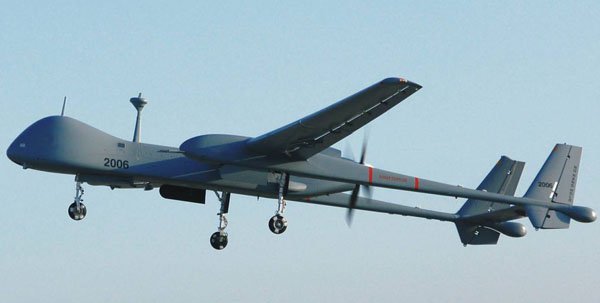The French Senate Foreign Affairs, Armed Forces and Defence Committee has decided to cancel a large part of the financial provision for the next MALE UAS programme and allocate the saving towards the development of the Franco-British joint venture MALE programme for 2020.
The decision was non-partisan, with 33 votes in favour, two against and one abstention. It effectively cancels the Heron TP programme, which the government had initiated without tender in direct negotiations with importer Dassault and its sub-contractor IAI, Israel. Instead, the Committee recommends the purchase of 7 Reapers with 2 Ground Control Stations and a 10-year maintenance contract – the solution favoured by the French Air Force and troops on the ground in Afghanistan.
To read the full report in French, click here.
Here is a translation of an extract of the committee’s report:
There are two possible solutions to meet the armed forces MALE UAS requirement:
- The Heron TP from IAI Israel, imported by Dassault
- The American General Atomics Reaper
The Heron TP is a surveillance UAS that can be modified for combat. 7 examples have been produced. Use by French forces would require modification of the satellite link (Satcom) which links it to the ground segment. According to the proposal from IAI-Dassault in May 2011, the cost – without the French modifications – for 7 aircraft, 2 ground control stations and operational maintenance for 10 years would be €320M; the cost of adaptation for French use would be the subject of negotiations between Dassault, IAI and the French state. According to a report transmitted to the committee the total cost including the French modifications could run up to €370 M. The committee believes that this drone – with at the minimum a French satellite link – could not be operational, in the best of cases, in less than 3 years after placing the order. More than 150 Reaper drones have been manufactured. It is a prowling and combat drone. It has six external pylons, which allow the carriage of a multipurpose weaponry (bombs & missiles), which gives it a real omni-role capacity. According to a proposal from General Atomics in May 2011, its cost – without French modifications – was for €209M. The EADS company would apparently be willing to undertake the French modifications, to the tune of 40% French, for an amount of €88M, bringing the total cost to €297M for 7 aircraft and 2 ground control stations and 10 years operational maintenance. The committee estimates that this drone could be operational within 2 to 3 years after placing order, irrespective if it receives the French modifications or not.Moreover, it is important to know that the maintenance contract of the interim MALE drone or “Harfang”, which is currently deployed by the French forces, and is entrusted to the EADS company will expire in October 2013. In July 2011, the Minister of Defence decided to start negations with the Dassault company to import the Heron TP. The 2012 budget includes credits for the payment of €2.3M and the authorisation for expenditure commitment of €318 M for something called “UAS – MALE”, destined to maintain the MALE capacity up to the arrival of the future MALE system, which is programmed, as a Franco-British cooperation, for the horizon of 2020-2022. This decision to choose the Heron TP, without a tender process, is difficult to understand. It is financially unsound, militarily doubtful and industrially dangerous, as, according to the proposal of May 2011, the Dassault company will, besides the integration of the Satcom and supplementary sensors, only be responsible for the import, the certification and flight testing. Amongst others, this does not permit to satisfy the operational requirement until after the conclusion of the operational maintenance contract for the Harfang drone, which would lead to the creation of an operational capability gap. The commission therefore proposes to reduce the budget by the same amount as the supplementary cost brought on by the choice of for the Heron TP drone – namely the budgeted €318 million less €209 million for purchase of the Reaper i.e. €109 million. The committee proposes to make a provision of €29 million for obsolescence of the Harfang system, so that the final reduction would be €80M, which will be allocated towards the development of future MALE programme, and which would then directly benefit Dassault and/or EADS without involving IAI.
Source: French Senate Report

